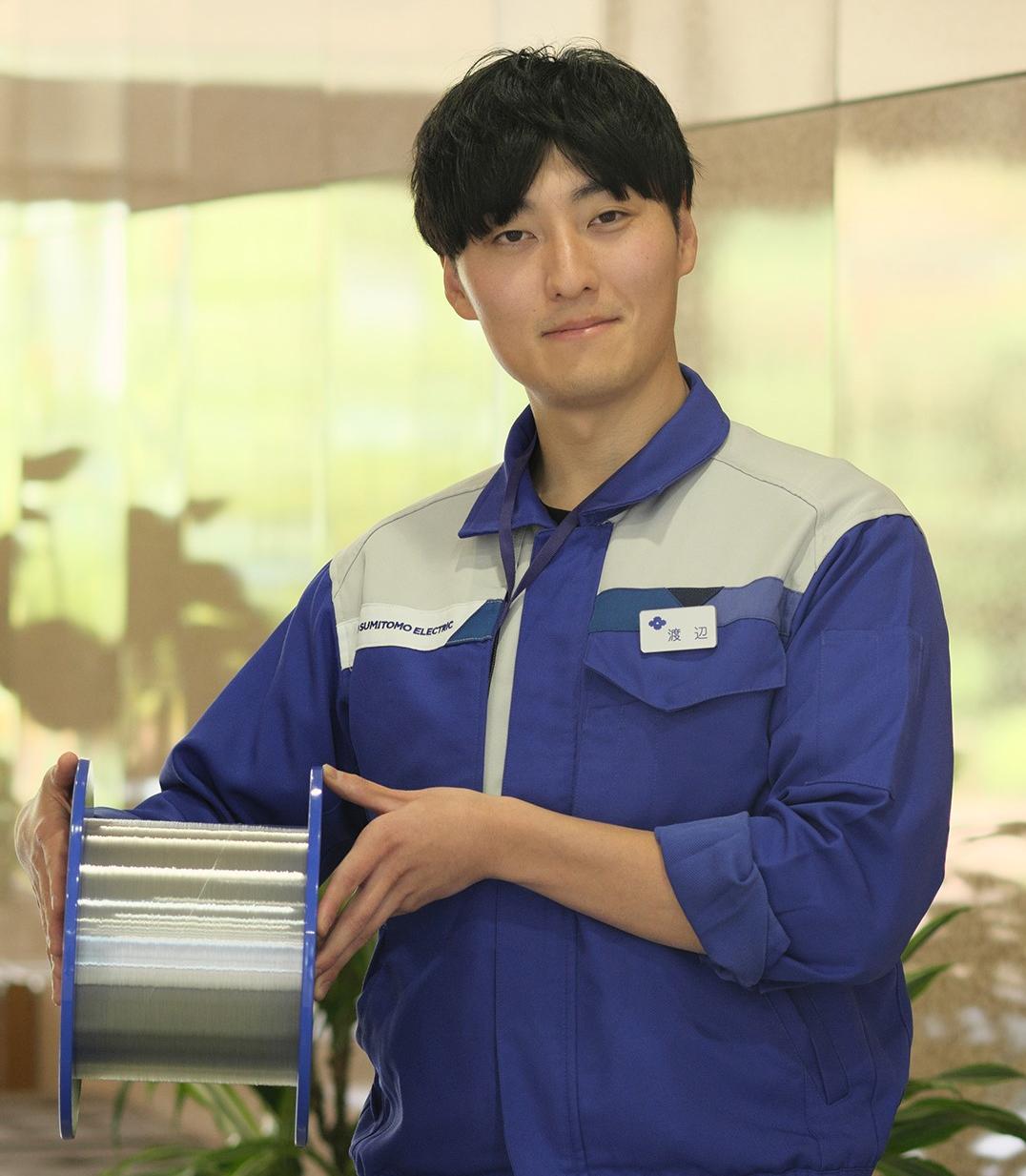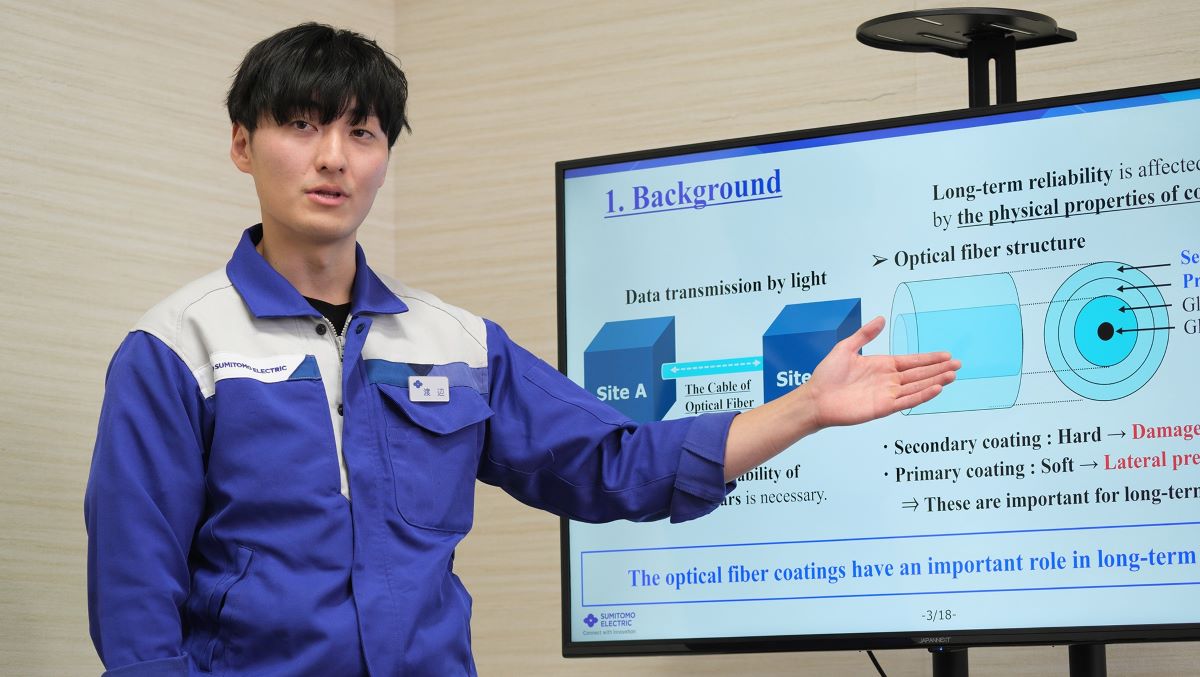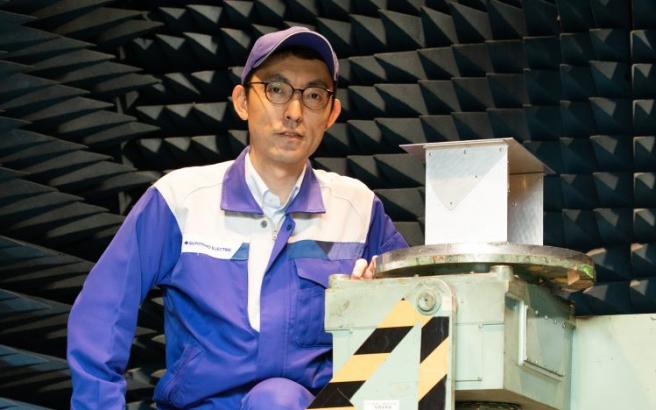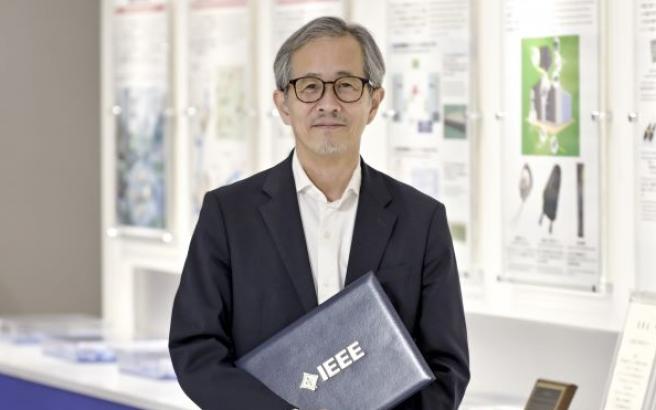Developing an Advanced Predictive Model for Enhancing Optical Fiber Reliability

Prediction of Physical Properties of Optical Fiber Coatings
Yudai Watanabe
Optical Communications Laboratory
Optical fibers form the invisible backbone of today’s information and communication networks. Although rarely noticed in daily life, they incorporate advanced technologies to ensure stable, high-speed connectivity. One vital element is the protective coating that shields the delicate glass core from physical damage. This coating is typically cured using ultraviolet (UV) light, and its mechanical properties significantly affect the long-term reliability of the fiber. However, these properties can vary widely depending on the UV exposure conditions, making it difficult to consistently ensure high quality. To address this, we developed a novel predictive model capable of accurately estimating the cured properties of coatings under any given UV conditions. This model enables faster, more cost-effective process optimization and contributes to enhancing the reliability of optical fiber infrastructure, which is essential for supporting the accelerating demands of our data-driven society.
A New Predictive Model for Ensuring Fiber Reliability
With the recent surge in data traffic driven by the expansion of generative AI and big data, demand for optical fibers in data centers has risen sharply. Laying optical fiber cables requires large-scale work and significant cost; thus, once installed, these fibers are expected to maintain reliable performance for over 10 years. The mechanical properties of the protective coating are a key factor in ensuring this long-term reliability.
Although UV-curing reactions have long been used in the field of chemistry, they involve complex mechanisms with multiple reactive components, making it both time-consuming and costly to determine the optimal irradiation conditions. As the need to swiftly bring new products to market grows—along with increasing transmission capacity requirements—we recognized that designing an efficient manufacturing process for reliable optical fibers had become an urgent challenge. Our team resolved to develop a new in-house method to precisely predict the mechanical properties of the cured coating based on UV exposure conditions.

Unraveling the Complexity of UV-Curing Reactions
The major challenge lay in handling the complexity of UV-curing reactions. In such reactions, photo-initiators, special chemical compounds, are activated by UV light and trigger chain reactions with other chemicals (monomers), leading to the formation of crosslinked polymers. The extent of this crosslinking has a major impact on the mechanical properties of the coating.
Through detailed investigation and analysis, we discovered a clear correlation between the photo-initiator reaction rate and the intensity of UV irradiation. This insight allowed us to incorporate UV exposure parameters into a computational model capable of predicting the reaction rate of the photo-initiator with remarkable accuracy of 92% under arbitrary irradiation conditions.
By leveraging this model, we can now theoretically optimize curing conditions without relying on trial-and-error approaches. This enables rational and cost-effective process design.
Mechanism of UV-induced curing reaction
Purpose and Challenge in Developing Infrastructure-Defining Technologies
In research and development, we constantly iterate between hypothesizing potential phenomena and verifying them through testing. When a hypothesis or predictive model accurately explains real-world outcomes and leads to new discoveries, it provides immense satisfaction and a sense of accomplishment. Applying such insights to real product development is one of the most rewarding aspects of being an engineer.
With the global push for data-driven development and digital transformation (DX), we aim to move beyond experience- or intuition-based process design by leveraging data and numerical models, accelerating the advancement of control technologies and manufacturing processes.
In the realm of optical communication, innovations like thin fibers and space-division multiplexing continue to increase transmission capacity. Our company leads the industry with pioneering developments, such as the world’s first mass production of ultra-low-loss multicore optical fibers. Through such innovation, we are helping to build a more prosperous information society. As an engineer, I remain committed to continuously developing products that deliver value to society.

Related Information
[Paper] Analytical Formula for Microbending Sensitivity of Optical Fibers with Small Diameters, Sumitomo Electric Technical Review No. 98, 2024
[Press release] Sumitomo Electric Launches World’s First Mass-produced Ultra-low Loss, Multi-core Fiber
SUMITOMO ELECTRIC TECHNICAL REVIEW
A journal of technical papers explaining the Sumitomo Electric’s technologies. Technical papers are available in PDF format.
Learn more


